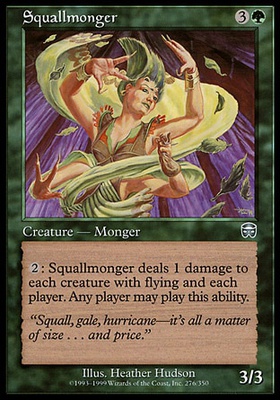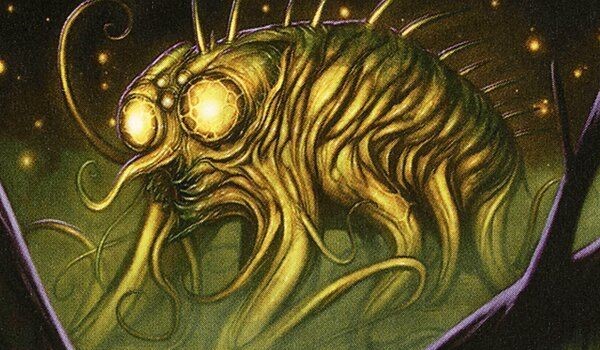Are you a Quiet Speculation member?
If not, now is a perfect time to join up! Our powerful tools, breaking-news analysis, and exclusive Discord channel will make sure you stay up to date and ahead of the curve.
Hello everyone, and welcome to a new chapter in the Magical Creatures series! Over the past few weeks, I have analyzed all the creature types that were created specifically for Magic. You can find the introductory piece here, in case you missed it. As for the latest, it dealt with creatures such as Beeble, Masticore and Metathran, all coming from Urza block. What's next, then?
We left the series with Urza's Destiny, from 1999, a year packed with new sets. Apart from closing off the Urza block with its second and third expansion sets, it also saw the arrival of Sixth Edition, commonly known as "Classic." And that's just the beginning! In 1999, starter-level set Portal Three Kingdoms saw print (check this piece out, if you haven't yet). And so did another starter set, this time Starter 1999, as well as the "box set" Battle Royal, a compilation of four decks aimed to support multiplayer.
As you all know by now, none of these sets introduced any new cards at all, let alone new creature types unique to Magic: The Gathering. And yet, we have one last set from that year, heralding a new block: Mercadian Masques. Let's take a look at that before checking out the new creatures it introduced.
Mercadian Masques
Released in October 1999, Mercadian Masques was the first set in the Masques block, which would continue the following year with Nemesis and Prophecy. It wasn't as full of overpowered cards as Urza's Saga, since the designers were rather cautious this time. Nonetheless, it had a great deal of good spells, as you can see below. And that's if we only consider new cards, since many great reprints were also featured, including Brainstorm, Dark Ritual and Counterspell.
Highlights from Mercadian Masques
Mercadian Masques was also the first set to introduce "fat packs" (today known as bundles). And the first set to include premium (i.e. foil) basic lands. Foil cards were first inserted in booster packs with Urza's Legacy, but this was the first time players could find basic lands, too. As such, foil basics from this set are now quite sought after, and keep an interesting price tag.
Now, back to creature types, of which Mercadian Masques introduced four: Mercenary, Monger, Rebel, and Spellshaper. Mercenary and Rebel are obviously not unique subtypes, so let's take a look at the other two in more detail.
Monger
Can you name any creatures with the subtype Monger? Slim odds, if you ask me. The only creature I thought I knew with this creature type was Spiritmonger, except that one is actually a Beast. Just a case of homonymy; sorry about that!
Only five creatures exist with this subtype, and all are from Mercadian Masques. As you may have imagined, it's a cycle: one creature for each color, and each bearing similar features. They all cost four mana (three generic and one colored), they are all 3/3, and they all have an activated ability costing two generic mana. Any player can activate these abilities, and not just the controller.
A Matter of Class
There's something more interesting than these abilities, though. And that's the reason why including Monger in this series might look like a bit of a stretch. Whereas all the other unique creature types we discussed were races, this one is a class. And when it comes to classes, it's not that easy to judge whether it's "unique to Magic" or not. I mean, anyone would agree that Atog, Phelddagrif, and Sliver were invented for this game. But since a monger is just a dealer of or trader in a certain commodity, things get more confusing.
And there's more: since Monger is just the class, those creatures still needed a race, right? After all, as we have seen time and again, that was one of the main goals of the Grand Creature Type Update. And that's why most of them got an additional subtype, this time with respect to the race. The subtypes are Boar, Human, Minotaur and Unicorn (in alphabetical order, but it's easy to tell who's who just by looking at the art). What about the fifth Monger? Well, Squallmonger didn't receive a race at all!

The point is the art, again. Squallmonger's illustration is just too different from that of any other race in Magic. As such, they decided to leave it with just the class, in spite of the concern of an attentive player who ruffled by such an injustice.
Besides allowing multiple players to activate their abilities, the type carries little relevance from a gameplay perspective. Perhaps Warmonger and Squallmonger could be decent cards in booster draft, but apart from that there's little to discuss. And even in that case, remember that cards with this kind of two-sided ability are always risky.
Spellshaper
What about Spellshaper? Can you think of some examples? The chances might be a little higher this time, since no less than 56 cards with this subtype exist. They are not that widespread, though. In fact, they are mostly concentrated in the Masques block and in the Time Spiral block. The first thing you should know is that, once more, this is a class rather than a race. They are "Spellcasters who devote themselves to perfecting a single spell or selection of spells," as stated on MTGwiki. What is most interesting about this creature type is its very concept. Long before the arrival of Planeswalkers, this was the first attempt at creating creatures that could "cast spells" (so to say) by themselves.
In fact, all Spellshapers have an activated ability that requires some amount of mana, tapping that creature and discarding a card. I really like this subtype, although once more it didn't offer any particularly remarkable card. The point is this creature type allows so many combinations, as you can see from the gallery below. Just by matching the subtype Spellshaper with other subtypes (this time race-wise), it's possible to create an enormous amount of interesting creatures.
Personal favorites
Time Spiral and all its References
This allows for many crossovers, such as Llanowar Mentor referencing Llanowar Elves, or Sliversmith mentioning Metallic Sliver. And even Dreamscape Artist, a blue creature that offers you a typically green effect (that of Harrow)! Or, above all, the absolute star of this weird group of creatures: Ridged Kusite, among my all-time favorites. Wait, did you think this is was a random creature with no references at all? Kusite actually quotes Guided Strike! And it even features the same monster, at least if you look at the Weatherlight version.
As for competitive play, the most interesting Masques creature was probably Waterfront Bouncer. It was included in several decklists, both in Standard and Extended, as it served as cheap and reliable removal for blue. Check out this classic U/G Madness list which in 2003 ended up in the Top 8 of GP New Orleans. By the way, did you know that in 2007, Bouncer became a Merfolk? That's right. It doesn't look like a merfolk at all, but apparently Saprazzan merfolks "were able to bisect their fins to function as legs." The more you know...
If you think about it, Spellshaper might be one of the coolest subtypes in Magic, and it's too bad we haven't seen any new ones in a while. Let's stay hopeful, though, since they may return in a supplemental set!
Class Over Race
In today's piece, we discussed two creature types unique to Magic. No big deal, since the whole series builds on that concept. The kicker, however, is that this time we dealt with subtypes that are classes rather than races. Monger may not have led to much, but Spellshaper certainly did!
What do you think? Do you have a favorite Spellshaper? Not a favorite Monger?! Let me know on Twitter or in the comments, and stay tuned for next installment. Next week, we'll move to a new block altogether, the first from the new century!




